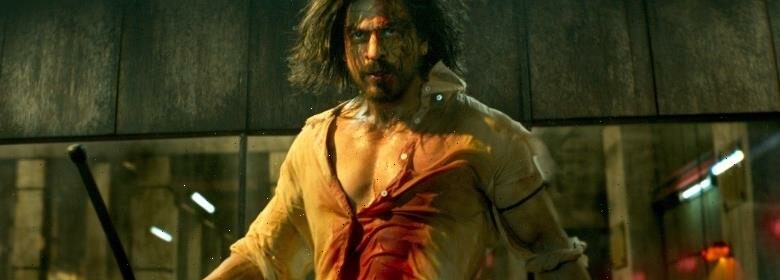The Success of ‘Pathaan’ Has Nothing to Do with ‘RRR’ — Here’s Why That Matters

Amidst an array of newly-minted Oscar nominees, the fourth-highest grossing movie in the world this past weekend was an Indian movie. And, no, it wasn’t the beloved “RRR.”
During its opening weekend, Siddharth Anand’s action-thriller “Pathaan” clocked in just below “Avatar: The Way of Water” worldwide. It broke Indian box-office records, but also made much of its nearly $70 million worldwide in international markets. On our domestic charts, it beat out everything from “Plane” to “Everything Everywhere All at Once.”
Major releases do massive ticket sales in India, where the price per ticket is significantly lower than the U.S., but cracking the international leaderboard reflects an X factor at work. This upswing in international interest might suggests a trend tied to the success of S.S. Rajamouli’s wildly popular “RRR.” Everyone: “RRR” is a great movie, but to give it the credit is to sell Indian cinema short. It has always been potently entertaining and finally the West is paying attention in entirely new ways.
“Pathaan” comes from one of India’s biggest production houses, Yash Raj Films (the company behind Broadway’s upcoming “Come Fall in Love,” based on the megahit Hindi film “Dilwale Dulhania Le Jayenge”). It marks superstar Shah Rukh Khan’s return to a leading role for the first time since 2018, and an extension of Anand’s previous action flicks, “Ek Tha Tiger” and “War.”
Opening-weekend shows sold out around the world, and videos of Indian theaters went viral on social media, with audiences screaming, cheering, and out of their seats dancing to “Jhoome Jo Pathan” (the hook step is, of course, already all over TikTok).
This is not an “RRR” effect; this is just what Indian cinema is.
This is as good a time as any to remind everyone reading that “RRR” is not Bollywood. By definition, Bollywood movies are made in Mumbai with Hindi dialogue. “RRR” was filmed mainly around Hyderabad with Telugu dialogues (though you won’t find them on Netflix), and is thus classified as Tollywood, like Rajamouli’s other successes in the “Bahubali” franchise. The “Bollywood” designation that many mistakenly apply to “RRR” is really just a recognition of quintessentially Indian elements of visual entertainment: the fights, the dancing, the dazzling spectacle.
Indian moviegoers might feel gaslit by the massive success of “RRR,” with the extensive think pieces about maximalism and what made the movie work, when a few months prior the same viewers (and critics) could not be less interested in movies like this. So what changed?
Arguably nothing. A New York Times piece about “RRR” noted that “attendees praise the film for the same reasons that had previously dissuaded them from watching new Indian movies,” such as long running times, musical numbers, and over-the-top action sequences (all of which feature in “Pathaan”). MovieWeb’s Neeraj Chand wrote that “it’s the kind of filmmaking that Hollywood loves to dismiss and disdain as ‘cheesy,’” yet non-Indian audiences have barely acknowledged this collective change of heart.
Commercial Indian movies regularly run long (with a humane intermission) and include multiple effervescent musical numbers. They are fueled by star power like “RRR” leads Ram Charan and N.T. Rama Rao Jr. — who were huge in India before the film (they’re already rumored to be chatting with Marvel). Khan is one of India’s biggest stars, with a massive global fan base that has eagerly anticipated his return for years.
Don’t get me wrong: I am thrilled for the team of “RRR,” and deeply satisfied that a South Indian masala blockbuster is the film captivating a global audience. “Pathaan” might be a popcorn action flick, but it’s also notably more Westernized with its locations, costumes, and dialogue — trying harder for global appeal, like many major Bollywood releases. “RRR” is from a lesser-known industry, in a lesser-known language, entrenched firmly in Indian culture, history, and artistic sensibility (and religion).
At the same time, it’s frustrating to not see the love for “RRR” translate beyond that specific title, or to see a success like “Pathaan” solely attributed to an “RRR”-obsessed audience. Bollywood, Tollywood, and Kollywood (Tamil-language films) movies need to be acknowledged, explored, and enjoyed. For every “Naatu Naatu,” there is a “Jalabulajangu” and a “Malhari” (and songs that also spotlight Indian women).
I watched “Pathaan” over the weekend in a theater that whooped at the sight of Khan’s eyes alone, clapped for a major cameo, and cheered while two men run up the roof of a falling train. It’s not necessarily the movie I’d recommend to “RRR” fans new to Indian cinema, but there are dozens — if not hundreds — of films that will do just that.
There are easily thousands of Indian films with exceptional musical numbers and an entire genre of anti-colonial epics that paint the British as cartoon villains. “RRR” was lightning in a bottle, and though no other film has its precise combination of star power, sensibility, and confidence, Indian films from the theatrical spectacle of “Brahmastra” to IndieWire’s hand-picked rom-coms to indie streaming originals have the same elements.
“Pathaan” is poised to break more records and to climb up the list of highest-grossing Indian films ever, where it’s already number 15. It did that without “RRR” spillover, but why shouldn’t it get a healthy boost from an ostensibly voracious fanbase? If “RRR” fans want to widen that interest, there’s a whole world of thrilling cinema ready to welcome them. We’ve been waiting for you.
“Pathaan” is playing in select theaters. “RRR” is streaming dubbed on Netflix, and in its original Telugu on Zee5.
Source: Read Full Article